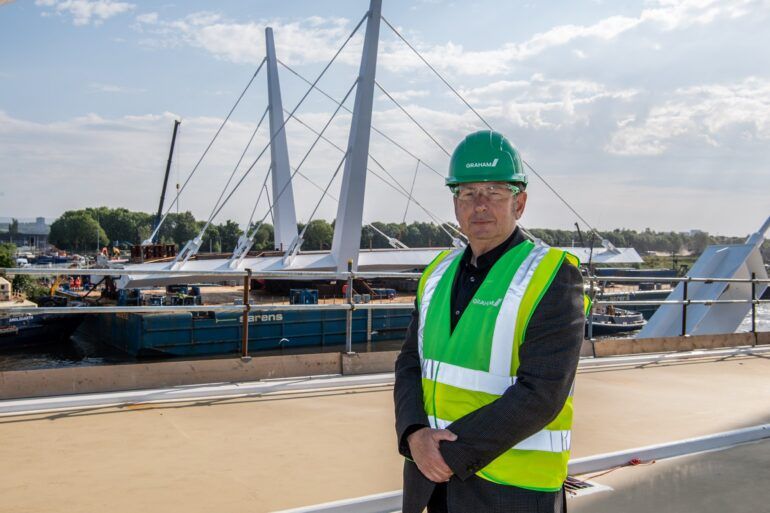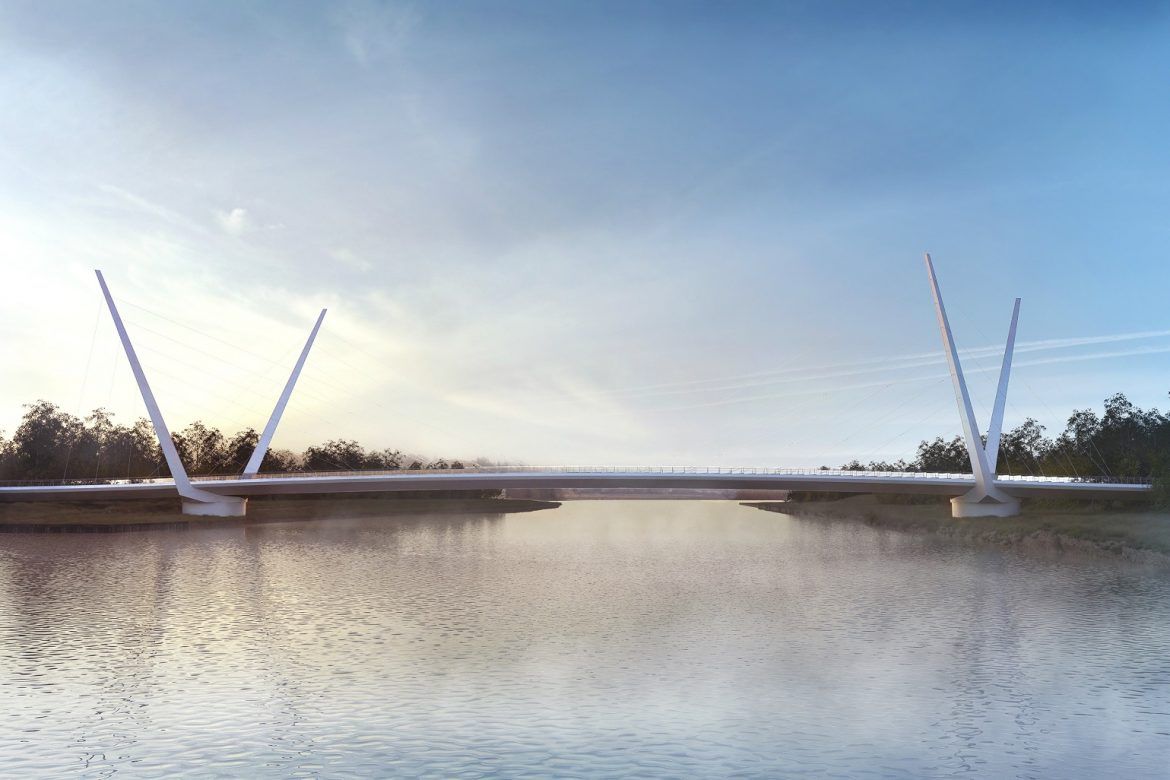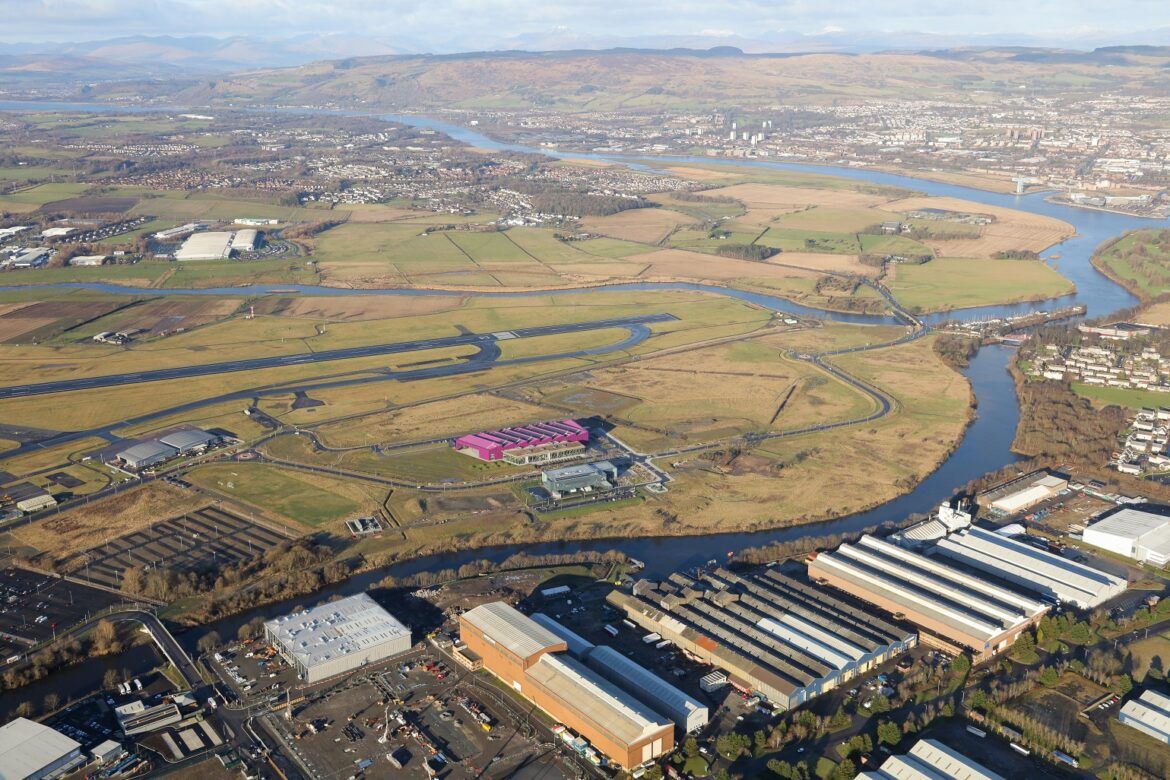World-renowned architect Tony Kettle reveals design inspiration for first opening road bridge over the River Clyde
“It was a rare opportunity to celebrate all that is special about this place, to remind people of the rich industrial heritage, of the globally recognised engineering and construction expertise that occurred on both banks of the Clyde” says Tony.
From a striking glass façade in Reykjavik designed to capture the essence of the northern lights all-year-round to an Eden-type garden in a low-energy office tower in Bahrain, world-renowned architect Tony Kettle continues to challenge his natural curiosity with projects across the globe.
His work on the Dewa Solar Innovation Centre in Dubai, which uses the latest technologies for renewable energy and combines it with Arabic geometry and the Fibonacci sequence, has received architectural acclaim – winning the RSA prize in Scotland and a LEED Platinum award as a benchmark for the Middle East region – and he had a hand in the initial designs of Europe’s tallest building, the Lakhta Centre in St Petersburg.
A £117m project led by Renfrewshire Council
While proud of his success abroad, it’s a project much closer to home though that piqued Tony’s interest in a way others couldn’t, and he jumped at the chance to design the first opening road bridge across the River Clyde – a £117m project led by Renfrewshire Council.
Tony said: “It’s fantastic to work closer to home. It means more if you are given a chance to contribute to improving people’s lives close to where you live.
“Shipbuilding on the Clyde inspired our design. The visual history of cranes juxtaposed against each other and the way the dry docks are cut into the banks at an angle. The challenge was to capture that spirit of movement in the angles of the new bridge structure, and to accentuate the fact this is a moving structure, not just another static bridge.
“The Renfrew Bridge is both a physical and symbolic connection, a celebration of the coming together of two communities that will undoubtedly benefit from having closer ties. It will create a gateway and a destination that should bring more people together to enjoy the riverbank and celebrate the history and rich cultural heritage that they share.
“It was a rare opportunity to celebrate all that is special about this place, to remind people of the rich industrial heritage, of the globally recognised engineering and construction expertise that occurred on both banks of the Clyde. What better way to celebrate it than with a new innovative moving structure.”
Visiting the site
Visiting the site to see the arrival of the final section of the bridge, Tony was delighted to see his designs come off the page and into existence.
“It’s fantastic to see the bridge in the flesh and I’m honoured and immensely grateful to the engineers and fabricators for their skills and ingenuity to make it a reality. I have learned over the years to be very patient as projects can be designed quickly but can take so long to materialise, so it’s great to see it arrive on the Clyde and for the project to move closer to completion.
“It will clearly improve transport connections between Clydebank, Yoker and Renfrew, but it will also give a focus and raise the profile of the towns as people and businesses are attracted to one of the longest span cable-stayed opening bridges in the world. People will be proud, and it will be a real landmark for the area and the seed for much wider regeneration.”
Tony formed the Kettle Collective with friend and managing director Colin Bone and their architectural studio now incorporates around 70 designers, each with their own focus on contextual design, sustainability and low energy solutions – with the recent Queen’s Award for Sustainability confirming their place at the forefront of international sustainable design.
With offices now in Edinburgh, London and the Middle East, Tony continues to further an inspiring career that all began with a few sketches at home.
Tony said: “My father inspired me to be what I am today. He was an engineer and used to do beautiful hand drawings with a single line and no mistakes. When you’re young, it’s these kinds of things that shape who you want to be, even if you don’t realise it at the time.
“We spent a lot of time in Sri Lanka when I was growing up while my father worked on the Victoria Dam, a beautiful double parabolic curved structure, and I learned so much about the importance of climate, culture, and context.
“Inspired to be a designer, I studied at Edinburgh Art College, then worked my way through the ranks at RMJM to be International Design Principal. From there, I formed the Kettle Collective with Colin 12 years ago and haven’t looked back since.”
Now with more than 35 years of experience in the industry, Tony Kettle is still famed in Scotland for his work to create the Falkirk Wheel, the hugely successful tourist attraction that combines art and engineering to create a moving boat sculpture that thousands have visited since it first opened in 2002.
“A Lego helicopter for my daughter…”
It was while playing with his daughter and her Lego that he felt the creative spark for the project and this led to a design which has been featured as an example of Scottish innovation on the £50 note and within the British passport.
“I was making a Lego helicopter for my daughter and realised the gearing could be used to maintain the horizontality of the caissons containing the water and boats. Maybe it’s just me that would think like that while playing with Lego, but sometimes the simplest tools are the best to understand a problem – and my daughter is still waiting to get her Lego back to this day!
“It is great to see that my completed design has enticed so many people to visit and enjoy the waterways, and I think the Falkirk Wheel is recognised globally now as part of our inventive culture as a nation. I visit now and then, almost as though visiting an old friend, and I’m immensely proud to have been part of the large creative team that were involved.”
While taking time to reflect on past successes and see the latest one come to fruition in Renfrewshire, time doesn’t stand still for Tony and his passionate team of designers.
New urban design projects across the Middle East are being undertaken in parallel with designing cutting edge low-energy model housing in Edinburgh, all part of a long list of difficult but exciting projects the Kettle Collective are taking on.
“I can’t resist a challenge. I have a natural curiosity to learn new things and enjoy turning seemly contradictory opposites into innovative solutions.
“As a Collective, we are inspired by the diversity of places and context we work in and look to understand, challenge and reinvent historical models to create new solutions – the key is to look for the special qualities that are unique to that particular place and celebrate them to create an authentic answer.
“I believe we do that with every project we are lucky enough to undertake and we certainly did that with the Renfrew Bridge. It’s a fantastic project that will change the landscape of the river for the better, offer fresh, improved transport connections, and create a visual landmark that generations to come can be proud of – I know I certainly will be.”
Scotland’s home of manufacturing innovation
The bridge is a key part of the £117million Clyde Waterfront and Renfrew Riverside project being led by Renfrewshire Council and will connect Renfrew with Yoker and Clydebank directly for the first time and will open up work, health, education and leisure opportunities on both sides of the river.
The project will also create additional connecting roads, cycling and walking routes, including from Yoker Railway Station to Inchinnan Road in Renfrew and on to the Advanced Manufacturing Innovation District Scotland (AMIDS) – Scotland’s home of manufacturing innovation.
The project is jointly funded by the UK and Scottish Governments through the £1.13billion Glasgow City Region City Deal, a partnership of eight councils working to deliver a programme of work to grow a strong, inclusive and sustainable City Region and an economy which delivers for all people and businesses.


